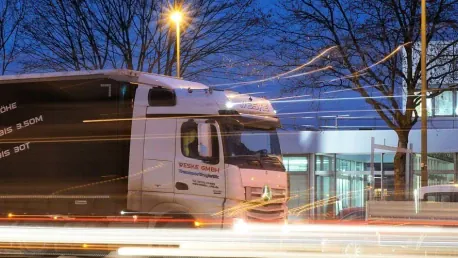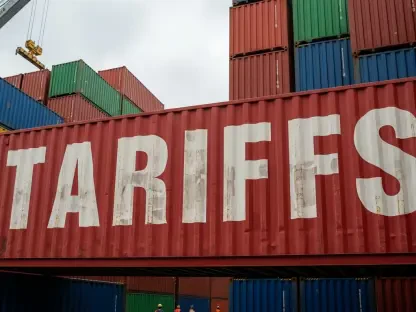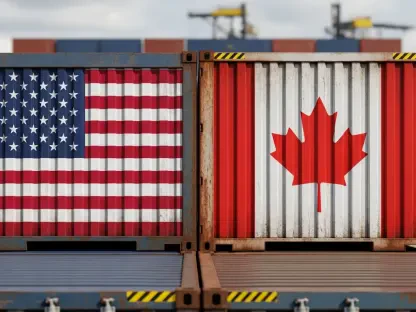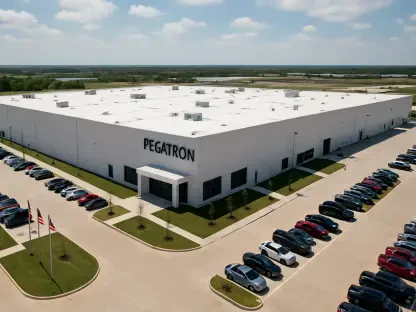Listen to the Article
Cold chain logistics is all about keeping temperature-sensitive products safe and high-quality, especially in industries like food, pharmaceuticals, and chemicals. In 2025, expect some big changes in the game, thanks to new tech, greener practices, and better methods. This article examines future market trends, challenges, and management opportunities transforming shipping operations.
What is Cold Chain Logistics?
Cold chain logistics protects groceries from extreme temperatures. It involves maintaining the right temperature and humidity while storing and transporting food. A stable environment is crucial for perishables and medicine because they are easily spoilable. By keeping an eye on both temperature and humidity, refrigerated transportation helps prevent spoilage, extend shelf life, and keep everything safe.
Cold Storage Stats You Should Know (2025-2030)
Here are the most relevant cold storage-specific statistics from the Food & Beverages Cold Storage Market 2025-2030 Forecast:
Market Size and Growth:
The global cold storage market for food and beverages reached $104.93 billion in 2023 and will continue to grow.
The market analysis shows that demand will rise to USD 120.64 billion in 2024, with a compound annual growth rate of 15.66%.
Market analysis indicates that the industry will double its value to USD 290.63 billion between 2030 and 2035.
Key Subcategories of Cold Chain Logistics
Cold chain logistics covers a lot of ground, so from start to finish, here’s a look at some of the key parts:
1. Packaging Solutions
Packaging is crucial for protecting products from environmental factors that could cause damage or spoilage. Some of the go-to products include:
Insulated containers: Thermal-proof crates prevent heat transfer, which makes them super effective at preventing heat transfer and keeping product temperatures steady for longer periods.
Thermal blankets: A thermal pallet cover technology that protects goods’ integrity for lengthy transit times.
Gel packs and dry ice: When it comes to keeping items at the right temperature, gel packs and dry ice each have their benefits. The first option contains water or a gel and maintains temperatures between 35°F and 46°F. The second method is a form of frozen carbon dioxide, so it keeps items much colder. It is ideal for items such as ice cream that need to stay frozen for a long time.
2. Temperature-Controlled Facilities
There are various facilities designed to keep temperature-sensitive products in specially controlled areas.
Cold rooms: Fruits, vegetables, and meats are best kept in one of these big refrigerated spaces, which include walk-in chiller rooms (+35.6°F), walk-in freezers (-0.4°F), and blast technology (-40°F).
Freezers: Cryometrix S-90 and Cryometrix RMF-90 are just two examples of state-of-the-art units with subzero conditions designed explicitly for keeping foods at -0.4°F or below.
Refrigerated warehouses: Cold storage refers to temperature-controlled warehouses that maintain specific temperature ranges but don’t regulate humidity. They typically range from -30° to 70° F, with ultra-low-temperature warehouses going as low as -122.8° F for pharmaceuticals. The most common freezer maintains conditions between -10 and -20° F. Not to be confused with climate-controlled warehouses, which control both temperature and humidity levels.
3. Transportation Solutions
Businesses really depend on transportation providers who maintain controlled environmental conditions throughout shipping. Sector-specific carriers respond to that need with the following specialized commodities:
Reefers: These trucks are specially designed to transport perishable goods at low temperatures. They are often called chiller trucks and are suitable for medium and short routes. For longer distances, companies use larger trucks with refrigerated semi-trailers.
Temperature-controlled air cargo: Flying your cargo provides precise climate control and monitoring, suitable for transporting delicate items like vaccines.
4. Monitoring and Tracking Systems
Maintaining the right conditions for thermally sensitive shipments throughout shipping would be impossible without real-time monitoring. Operators use different tracking programs to improve goods visibility while in transit and react promptly to adverse situations.
IoT sensors: These devices continually measure environmental variables such as Celsius/Fahrenheit (depending on the scale) and humidity.
Data loggers: Temperature records must be generated repeatedly over a prolonged period of time to ensure consistent product handling.
Blockchain: This solution generates permanent yet transparent information for complete end-to-end documentation purposes.
5. Distribution Channels
The distribution phase requires commodities to reach consumer, retail, or wholesale target destinations while sustaining critical temperature specifications.
Retail refrigeration: After groceries reach supermarket shelves, they need refrigerated display cases to stay fresh until customers buy them.
Direct-to-consumer delivery: Expanding online shopping requires unique delivery systems that transport sensitive, temperature-controlled items directly to household consumers, particularly meal package deliveries and pharmaceutical products.
6. Regulatory Compliance
The key to protecting cargo quality and safety is strictly following the most critical regulations in the food and pharmaceutical sectors.
Good Distribution Practices: Standards exist to keep pharmaceuticals, including vaccines, safe during storage and transport.
Hazard Analysis and Critical Control Points: Temperature-sensitive products should be handled according to safety standards established by food safety guidelines.
Heat-responsive goods depend on these features to maintain their integrity, stay safe, and function correctly while on their journey.
Key Trends Shaping the Future of Cold Chain Logistics
1. Sustainability at the Core of Operations
The logistics industry uses a lot of energy and must cut carbon emissions because of growing environmental concerns. In 2025, the sector might focus more on green transportation as it works to reduce fuel consumption and lower its CO2 output and waste. Renewable energy, like solar and wind power, is trending in refrigerated delivery services, just like it is across many others. To ship sustainably, carriers will look into ways to use energy wisely and reduce emissions.
2. Artificial Intelligence and Automation
Experts expect logistics to soon change drastically with the help of artificial intelligence. AI is already part of warehouse operations by optimizing management, accurately forecasting needs, and enhancing inventory control. Automation leads to better use of space and more accurate product handling. Additionally, warehouses can integrate predictive maintenance tools that allow them to spot machinery problems before they occur, reducing downtime.
3. Tackling Climate Change with Resilience
As climate change triggers extreme weather events, such as floods, hurricanes, and droughts, they can impact logistics operations severely. Cold chain facility owners are now spending money on infrastructure that can handle extreme conditions since advanced cooling equipment with backup power capabilities is becoming standard practice.
4. Reducing Food Waste
Food waste continues to be a worldwide issue because more than one billion tons of consumables are discarded yearly. The cold chain logistics system helps reduce food waste by keeping perishable products fresh during transportation and storage. When businesses use IoT sensors and enhanced monitoring technology, they can prevent temperature risks, which helps keep groceries safe and enables efficient resource use.
5. Expansion and Customization of Refrigerated Solutions
Businesses are building more temperature-controlled facilities because customer demand is rising. When companies outsource their cold storage operations and use built-to-suit facilities designed for their specific needs, they become more efficient and save money. The BTS model allows businesses to meet growing demands without investing heavily in new infrastructure.
6. Enhancing Resilience in Supply Chains
Recent global disruptions in the Panama Canal have revealed significant weaknesses in cold chain freight systems. In response, companies are building networks that can adapt quickly to these new market disruptions. Cold chain operators are improving stock management, keeping backup inventories, and securing transportation routes to ensure product safety in case of disturbances.
Conclusion: An Industry in Transformation
Modern logistics for shipping temperature-sensitive goods uses new technologies to improve efficiency. It relies on AI, automation, and real-time monitoring for better reliability and adaptability. Business operations are developing fundamental sustainability principles alongside climate protection strategies, redefining their approach to refrigerated freight. The key takeaway is that cold chain logistics should continue to develop into an innovative, efficient system for maintaining conditions for heat-responsive goods through 2025 and beyond.









